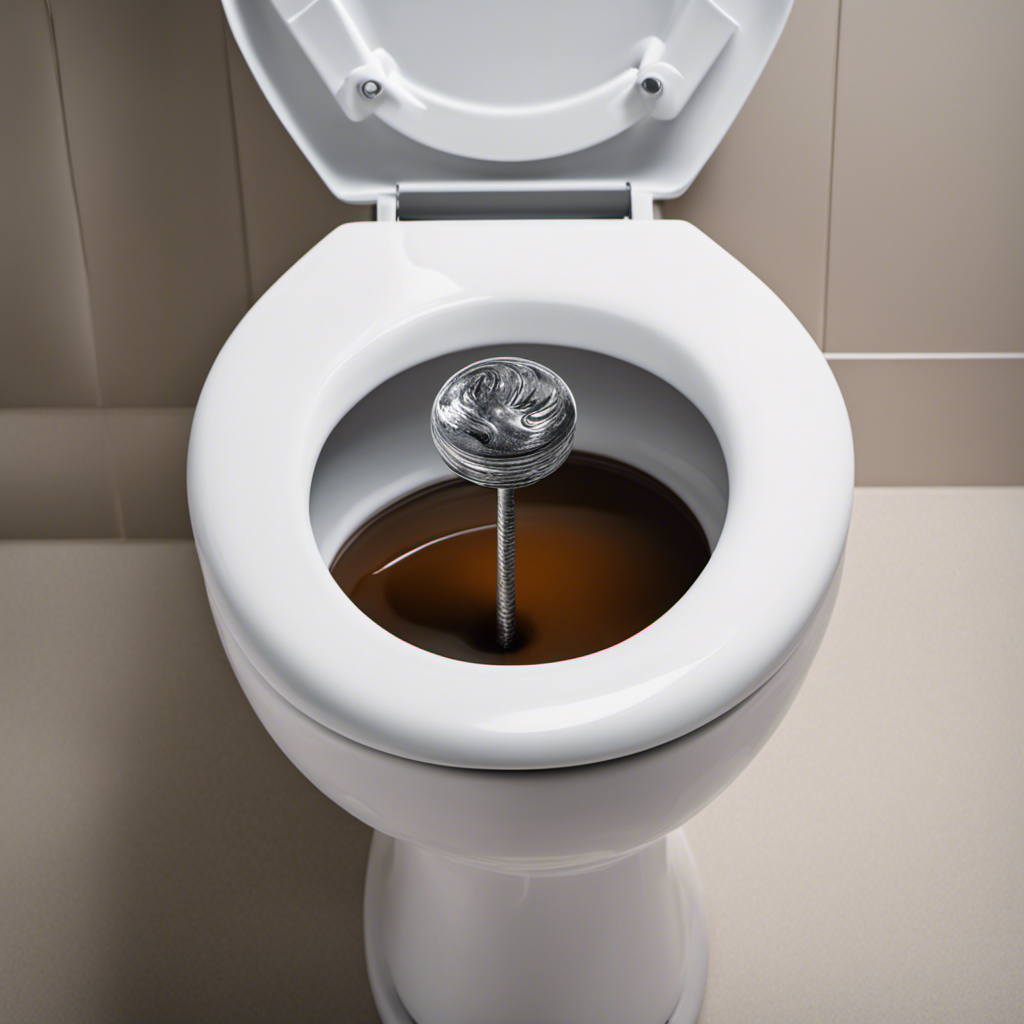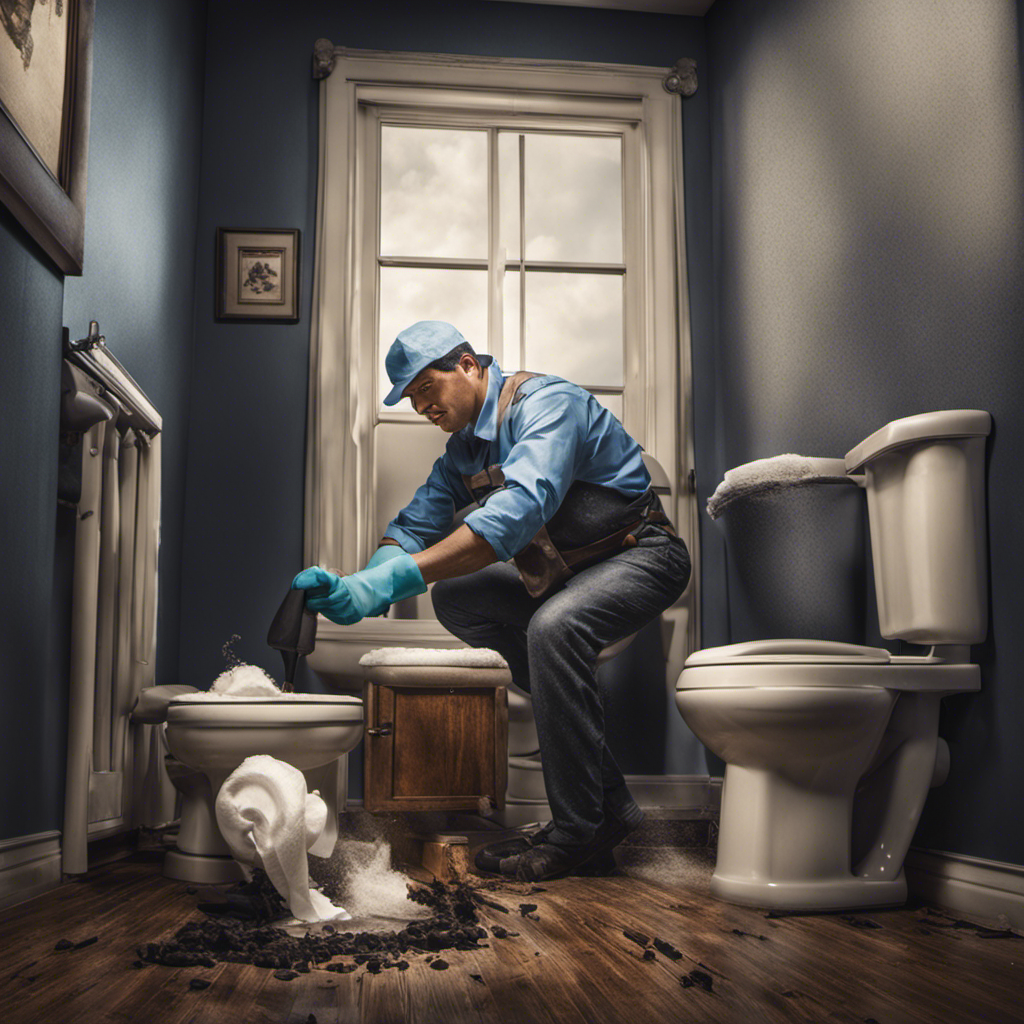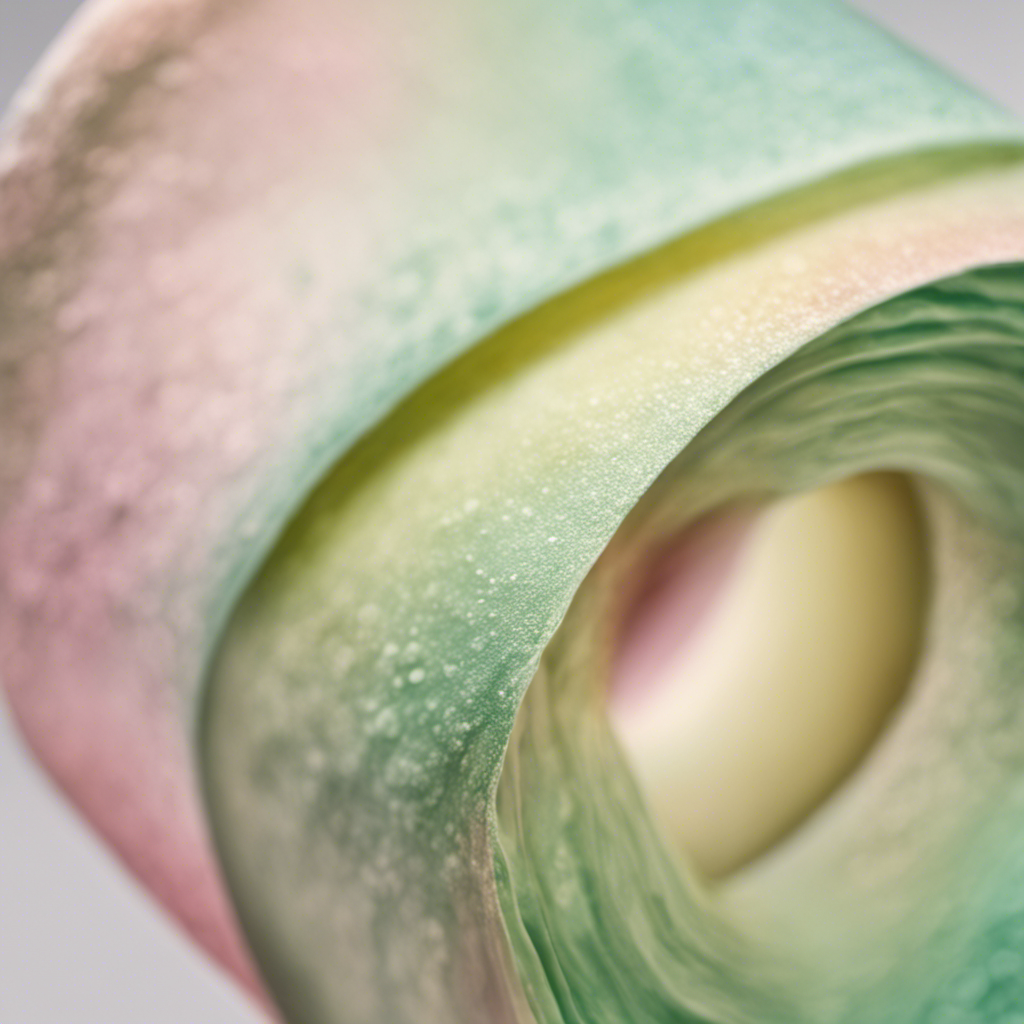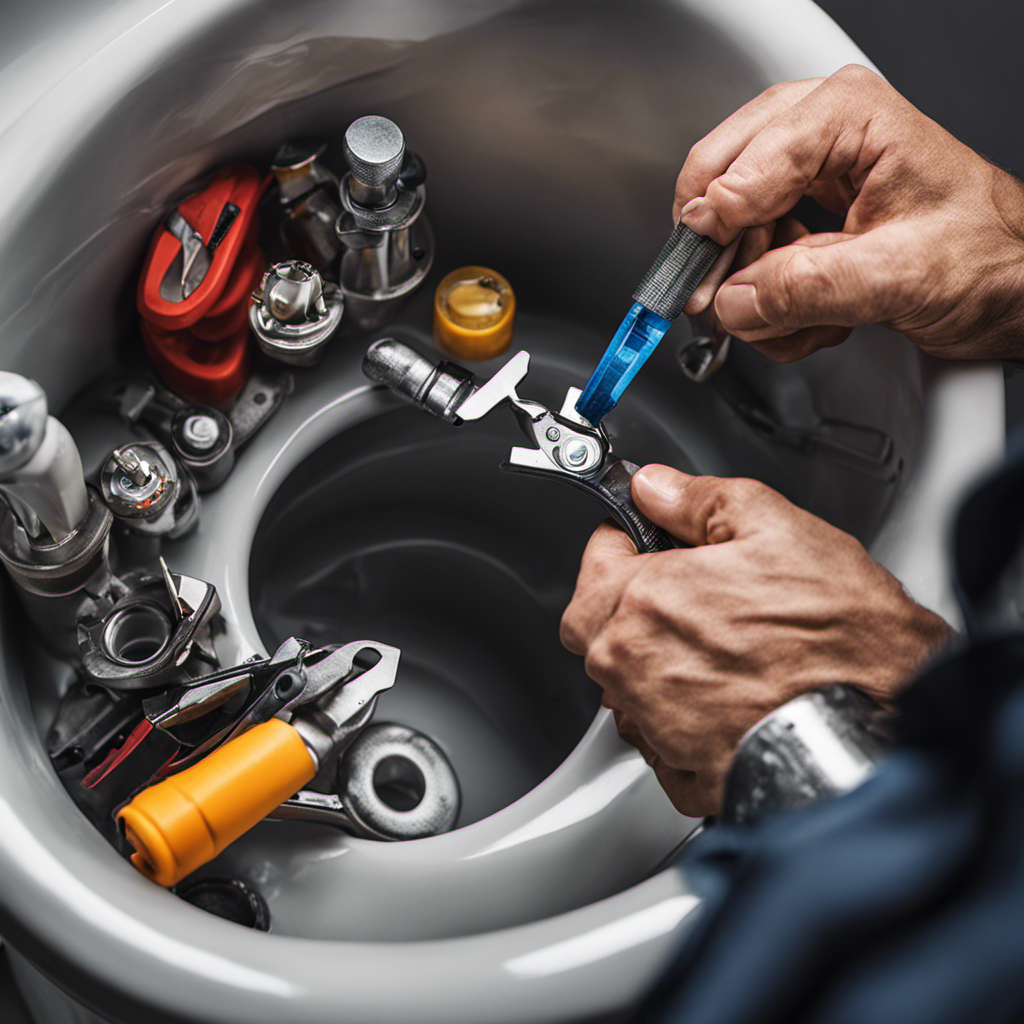As someone who has experienced the frustration of a clogged toilet, I know how important it is to tackle the problem head-on.
In this article, I’ll guide you through the steps to quickly and effectively unclog your toilet, using simple tools and materials that you probably already have at home.
Whether it’s a result of excessive toilet paper or something more serious, I’ll show you how to handle the situation like a pro.
Let’s get started!
Key Takeaways
- Flushing excessive amounts of toilet paper can quickly lead to blockages in the plumbing system.
- Signs of a clogged toilet include water rising to the brim or not draining properly when flushed.
- Quick fixes for a clogged toilet include using a plunger, a toilet auger, pouring hot water, or using a mixture of baking soda and vinegar.
- To prevent future toilet clogs, use toilet paper sparingly, avoid flushing non-flushable items, regularly clean the toilet, and be mindful of warning signs.
Common Causes of Toilet Clogs
One of the most common causes of toilet clogs is flushing excessive amounts of toilet paper. While it may seem harmless to flush large quantities of paper down the toilet, it can quickly lead to blockages in the plumbing system.
Toilet clog prevention is essential to avoid these inconvenient and often messy situations. Signs of a clogged toilet include water rising to the brim or not draining properly when you flush. Additionally, you may notice gurgling sounds or a foul odor coming from the bowl. Understanding these signs can help you take action before the problem worsens.
In the next section, I will discuss some quick fixes for a clogged toilet to help you resolve the issue promptly and efficiently.
Quick Fixes for a Clogged Toilet
Take a plunger and firmly push it up and down to try and unclog it. This is the first step in quick fixes for a clogged toilet. Here are some other methods you can try:
- Use a toilet auger to break up the clog and remove it.
- Pour hot water into the toilet bowl to help dissolve the clog.
- Use a mixture of baking soda and vinegar to create a chemical reaction that can loosen the clog.
- If none of these methods work, consider calling professional plumbing services for assistance.
Regular toilet maintenance is essential to prevent clogs. Avoid flushing excessive toilet paper or disposing of items that can cause blockages. Remember, if you’re not comfortable or unable to resolve the issue yourself, it’s best to seek help from a professional plumber.
In the next section, we will discuss the tools and materials you’ll need for these quick fixes.
Tools and Materials You’ll Need
Using a plunger is the first step, but there are other methods you can try to unclog a toilet. One effective tool to have on hand is a drain snake, also known as a toilet auger. This handy tool is designed specifically for clearing clogs in toilets. It consists of a long, flexible cable with a coiled end that can be inserted into the toilet drain. To use a drain snake, simply insert the coiled end into the toilet bowl and rotate the handle clockwise while applying gentle pressure. The cable will work its way through the clog, breaking it up and allowing water to flow freely once again. A drain snake is a valuable addition to any household toolkit when it comes to dealing with stubborn toilet clogs.
| Tool | Description | Usage |
|---|---|---|
| Toilet Plunger | A rubber cup attached to a handle | Place the plunger over the toilet drain and push down firmly, then pull up quickly to create suction and dislodge the clog. Repeat as necessary. |
| Drain Snake | A long, flexible cable with a coiled end | Insert the coiled end into the toilet drain and rotate the handle clockwise while applying gentle pressure. The cable will work its way through the clog, breaking it up. |
| Rubber Gloves | Protective gloves made of rubber or latex | Essential for hygiene and to protect your hands from any potential mess while dealing with a clogged toilet. |
Step-by-Step Guide to Unclogging a Toilet
The first thing you’ll need to do is gather all the necessary tools and materials. Here’s what you’ll need:
- Rubber gloves: Protect your hands from any potential mess.
- Toilet auger: This tool is designed specifically for unclogging toilets.
- Hot water: Pouring hot water into the toilet bowl can help break up the clog.
- Baking soda and vinegar: This combination can create a chemical reaction that may help dissolve the clog.
If these DIY methods don’t work, it may be time to consider professional plumbing services. They have the expertise and specialized equipment to handle even the toughest clogs.
Professional plumbers can diagnose the issue, offer effective solutions, and ensure the problem is resolved properly. Remember, it’s important to address a clogged toilet promptly to prevent any further damage or inconvenience.
Preventing Future Toilet Clogs
To prevent future clogs, make sure you dispose of non-flushable items properly. It’s important to understand what can and cannot be flushed down the toilet. Here are some maintenance tips for a clog-free toilet:
-
Use toilet paper sparingly: Excessive use of toilet paper can lead to clogs. Use only as much as necessary.
-
Avoid flushing non-flushable items: Items like wet wipes, feminine hygiene products, and paper towels should never be flushed down the toilet.
-
Regularly clean the toilet: Build-up of mineral deposits and debris can contribute to clogs. Regular cleaning can prevent this.
-
Be mindful of warning signs: Keep an eye out for warning signs of a potential toilet clog, such as slow drainage or gurgling sounds.
Frequently Asked Questions
Can a Clogged Toilet Cause Damage to the Plumbing System?
A clogged toilet can potentially cause damage to the plumbing system. The blockage can lead to pressure buildup, which may result in pipe bursts or leaks. These long-term effects can be costly and require professional repairs.
How Can I Tell if the Clog Is Located in the Toilet or in the Main Sewer Line?
To determine if a clog is in the toilet or main sewer line, look for signs like multiple fixtures backing up, gurgling sounds, and slow drains. A plumber can use specialized tools for accurate detection.
Is It Safe to Use Chemical Drain Cleaners to Unclog a Toilet?
Using chemical drain cleaners to unclog a toilet may seem convenient, but it’s not always safe. Boiling water and a plunger are more effective and don’t pose the potential dangers that chemical cleaners do.
What Should I Do if the Toilet Is Still Clogged After Attempting the Quick Fixes?
If the toilet is clogged and quick fixes haven’t worked, there are a few more steps to try. I can provide guidance on how to safely and effectively handle the situation.
Are There Any Warning Signs That Indicate a Toilet May Be Prone to Clogging in the Future?
To prevent toilet clogging, it’s important to be aware of warning signs and common causes. Signs like slow drainage and frequent backups may indicate future issues. Avoid flushing excessive toilet paper or non-flushable items.
Conclusion
In conclusion, when faced with a clogged toilet, it’s crucial to act swiftly and confidently. By understanding the common causes and employing quick fixes, you can avoid the messy and inconvenient aftermath of a clog.
Armed with the right tools and materials, you can tackle the issue head-on, like a seasoned plumber unraveling the mysteries of a labyrinth.
Remember, prevention is key, so take the necessary steps to ensure your toilet remains free-flowing like a serene river, undisturbed by the turbulence of clogs.










